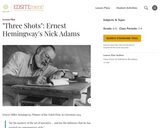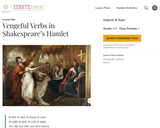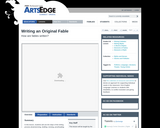
A collection of worksheets for various student levels in combining and varying sentence patterns in writing.
- Subject:
- English Language Arts
- Material Type:
- Activity/Lab
- Provider:
- K12 Reader
- Author:
- K12 Reader
- Date Added:
- 02/26/2019

A collection of worksheets for various student levels in combining and varying sentence patterns in writing.

A lesson on the differing types of sentence structures including simple, compound, complex, dependent and independent clauses.

Lessons, Powerpoints, activities and games on the differing types of sentence structures including simple, compound, complex, dependent and independent clauses.

This resource contains lessons, Powerpoints, activities and more on the differing types of sentence structures including simple, compound, complex, dependent and independent clauses.

In this lesson, students study issues related to independence and notions of manliness in Ernest Hemingway’s “Three Shots” as they conduct in-depth literary character analysis, consider the significance of environment to growing up and investigate Hemingway’s Nobel Prize-winning, unique prose style. In addition, they will have the opportunity to write and revise a short story based on their own childhood experiences and together create a short story collection.

This handout provides overviews and examples of how to use tone in business writing. This includes considering the audience and purpose for writing.

A handout/tutorial on cliches and avoiding them in writing.

A handout/tutorial on trimming redundancies and wordiness in writing.

A handout/tutorial on identifying and avoiding the overuse of qualifiers in one's writing.

Detailed handout on maintaining style in writing, including avoiding wordiness, cliches, and maintaining verb tense.

A handout/tutorial on the importance of word choice in writing including wordiness, redundancy, and cliches.

Expose middle school students to a first taste of Shakespeare from the angle of the ghost story and launch into the subject of verbs. In this lesson, they learn how Shakespeare uses verbs to move the action of the play. Students then distinguish generic verbs from vivid verbs by working with selected lines in Hamlet's Ghost scene. Finally they test their knowledge of verbs through a crossword interactive puzzle.

In this lesson, students will use the steps of the writing process (brainstorming, drafting, revising, proofreading, and publishing) to write original and, in small groups, perform their fables as skits. Students will also review the elements of a fable, such as theme, in order to create original written fables of their own.